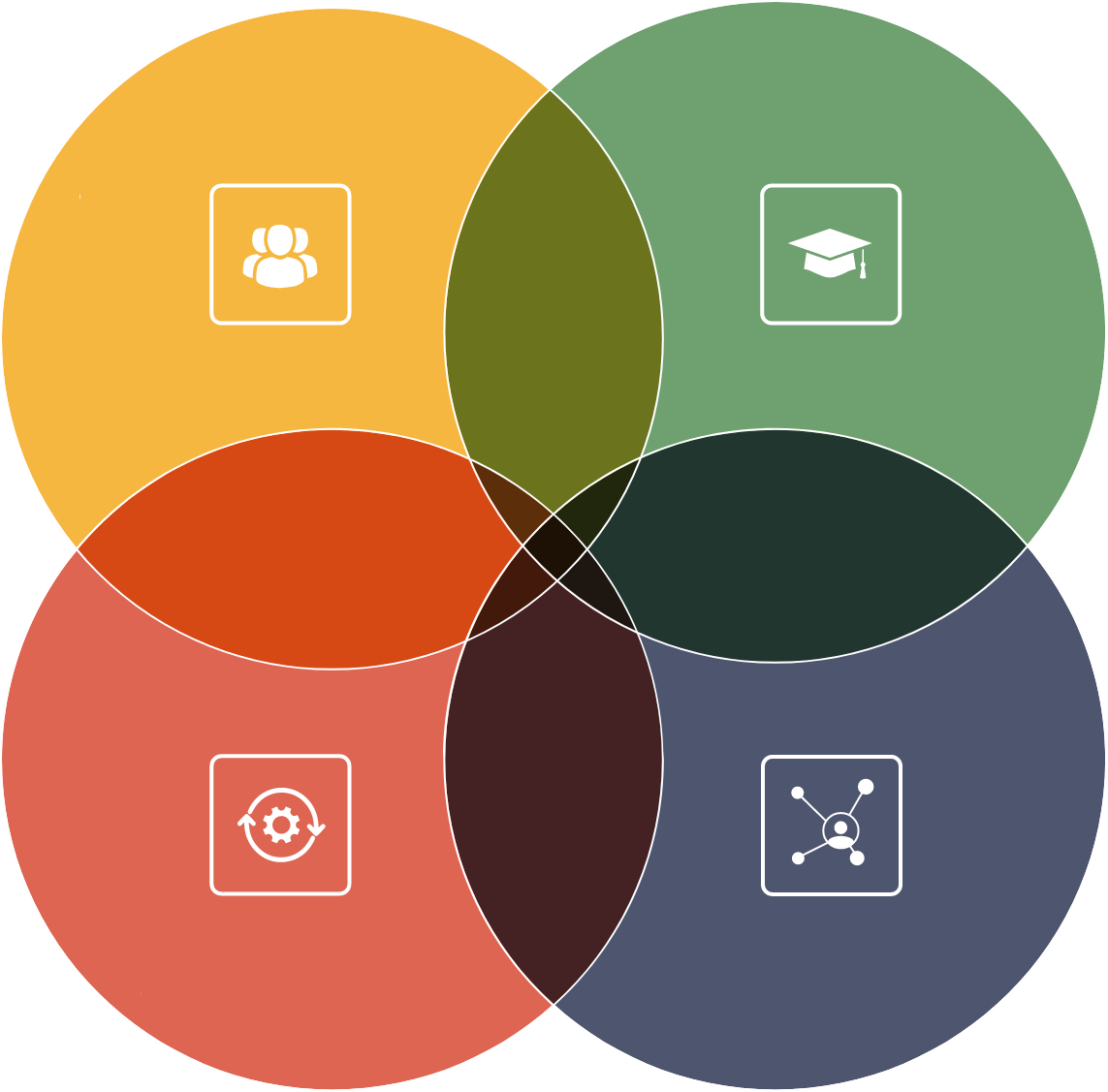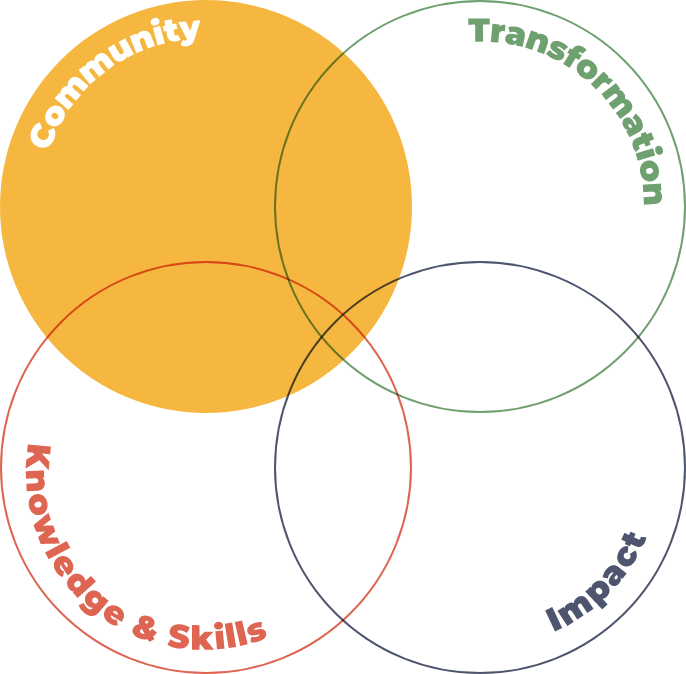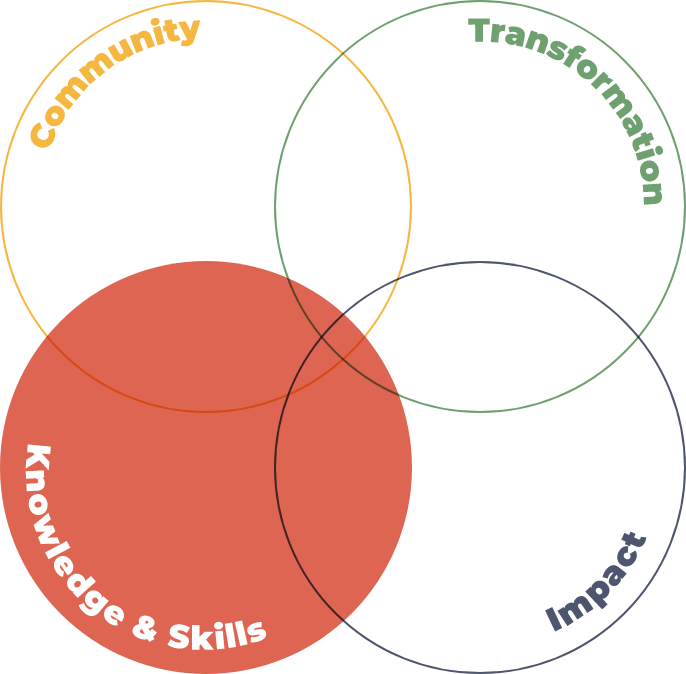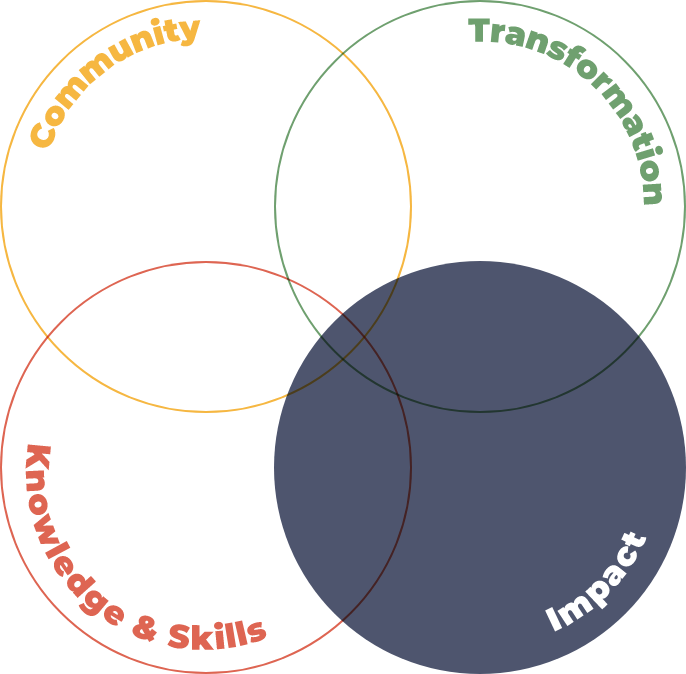University of Utah E3 Framework
The University of Utah wants every undergraduate student to obtain an Exceptional Educational Experience (E3) during their time at the U. This means that we want students to be part of a Community where they form positive and enriching relationships and connections are made with their interest areas. By developing autonomy and self-direction we believe that students will experience a Transformation. We expect students to develop broad knowledge through General Education, deep Knowledge and Skills within their majors and deeply engaged learning experiences. We also want students to make an Impact where personal interest, motivation, and application are demonstrated. These four categories are organized into an E3 Framework, which is a way of articulating, describing, assessing, and demonstrating what the University of Utah wants every undergraduate student to experience.
Community
|
|
Positive & Enriching Relationships This area relates to the development of a supportive environment for learning and growth. A student connects with others and develops an understanding and respect of diverse perspectives. The student develops strong relationships and a sense of belonging and social connection. They contribute to others and the group through effective engagement and dialogue. Themes: • Empathy and Diversity Examples: • Student leadership |
Knowledge & Skills
|
|
Standards, Process, Guidelines This area relates to the systematic development of knowledge and skills. A student explores various fields of knowledge / skills and develops an intention to acquire expertise in select fields which are relevant to their personal / professional purpose. The student develops and applies a process to develop expertise through study and practice, culminating in mastery (and scholarship). Themes: • Clarity and Plan Examples: • Developing expertise in a field of study |
Transformation
|
|
Autonomy & Self-Direction This area relates to the development of the self during the university experience. A student deepens their own understanding of self and others through reflection, experience, and genuine self-expression. It manifests in a strong sense of meaning and purpose in one’s future outlook. Themes: • Personal Purpose / Vision Examples: • Creating a personalized learning plan |
Impact
|
|
Performance & Application This area relates to the effective application of knowledge/skills towards a purpose to generate impact. A student sets challenging goals and then takes meaningful action towards the fulfillment of those goals. They summon inner resources to overcome challenges, learn from mistakes, and ultimately achieve success. Themes: • Performance Examples: • High scores on assessments |
The University of Utah E3 Framework:
- Describes the broad experiences that the University of Utah thinks students should have to benefit the most from their time with us.
- Communicates to students about the experiences and opportunities that are available in each of the areas of the framework so they can benefit the most from their U journey, while also allowing students to retain their uniqueness.
- Invites students to describe the learning that they developed from the experiences.
- Provides a structure to conduct a broad assessment across these different dimensions for all undergraduate students.
- Allows administration, programs, and other providers to have a common way to look at curriculum and opportunities, discuss them, and structure them while allowing for programs to retain their uniqueness.
- Provides a framework for programs to describe the learning outcomes expected.
- Allows each of these groups to communicate to each other and out to the broader community using a common language and understanding of the broad goals of the University of Utah.





